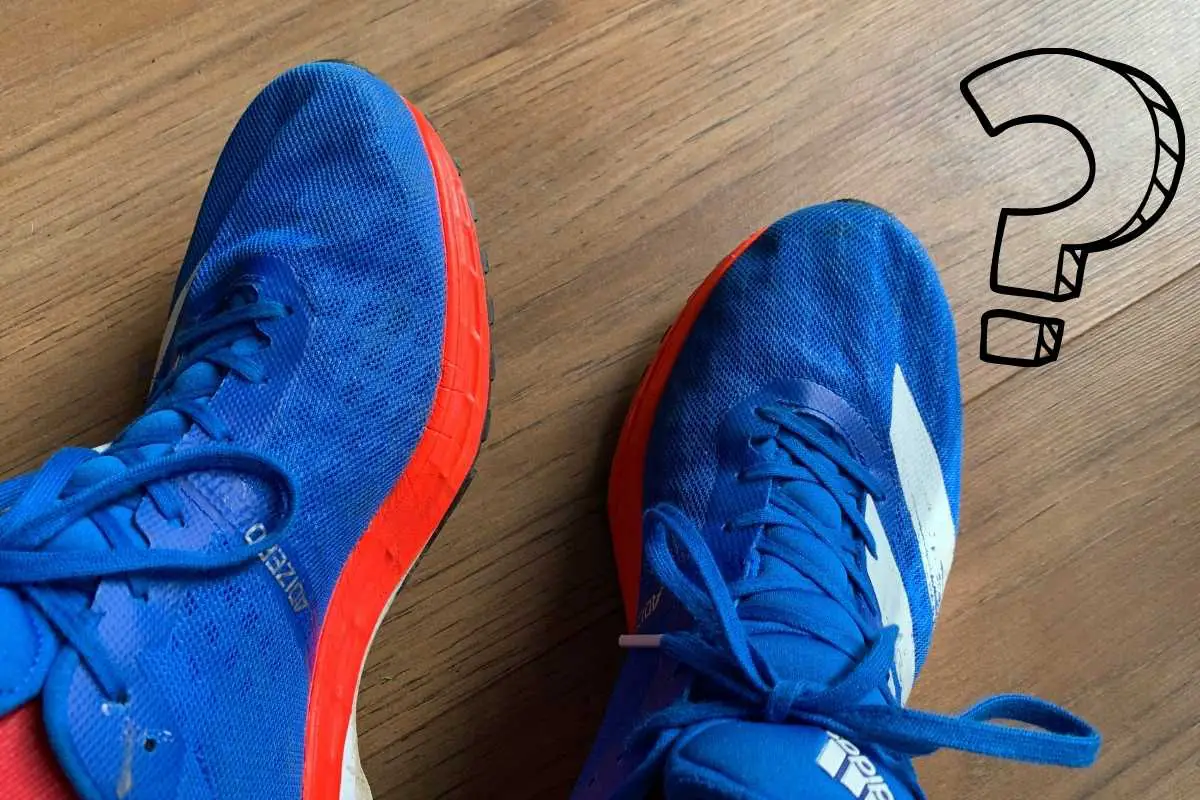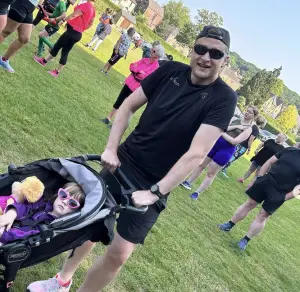This post contains affiliate links that helps support the website
Having been a keen runner for over 6 years now, I’ve been through numerous brands of running shoes, and I can say that understanding how well the shoe fits is key to enjoying your running.
If you can only fit ONE finger between your running shoe eyelets when fitted then your running shoe is likely to be too big. TWO fingers are just about right, and THREE fingers indicate the shoe is too tight.
Getting running shoes that fit YOU correctly is important and can be the difference in maintaining your running motivation and giving up. Good quality running shops will often offer a fitting service, so if you’re new to running or looking to change brands, it’s well worth seeking their expertise as well.
Is it bad to wear shoes half a size too big?
Not necessarily, but it depends on how much bigger the shoes are. Different brands of running shoe always seem to be slightly different (well, this is my experience anyway).
It is not bad to wear shoes half a size too big, in fact, this is recommended if you regularly suffer with tightness in any part of the shoe, particularly the toe box.
The common recommendation is to go to your local running shop and try on different brands to get a feel for the size. The staff will be experienced enough to help you make an informed choice.
Its worth consider if your running shoes should be tight or loose, see this article for more information.
You could choose to either go half a size bigger, or even a full size. You must try on the shoes before buying, however. Good quality running shoes are expensive, so buying ones which are the incorrect fit can quickly get expensive.
Should running shoes be a size bigger?
I explored this topic in another post which you can read here, but suffice to say that running shoes should be bigger than your casual or dress shoes. It’s important to understand that your feet expand when they get warm, which they do when you run. The further you run, the more they can expand. In MY experience…
Your running shoe should be around half a size larger than your normal foot size to account for expansion of your foot when running.
There is a BUT here and it does need to be taken into account. Be careful that you don’t go too far and so how do you know your running shoes are TOO big (Check my other post!)
Here is a picture of one of my pairs of Adidas running shoes, the Adizero RC 2 (current version on Amazon here) As you can see, I can fit two fingers between the eyelets so these shoes are about the right fit.
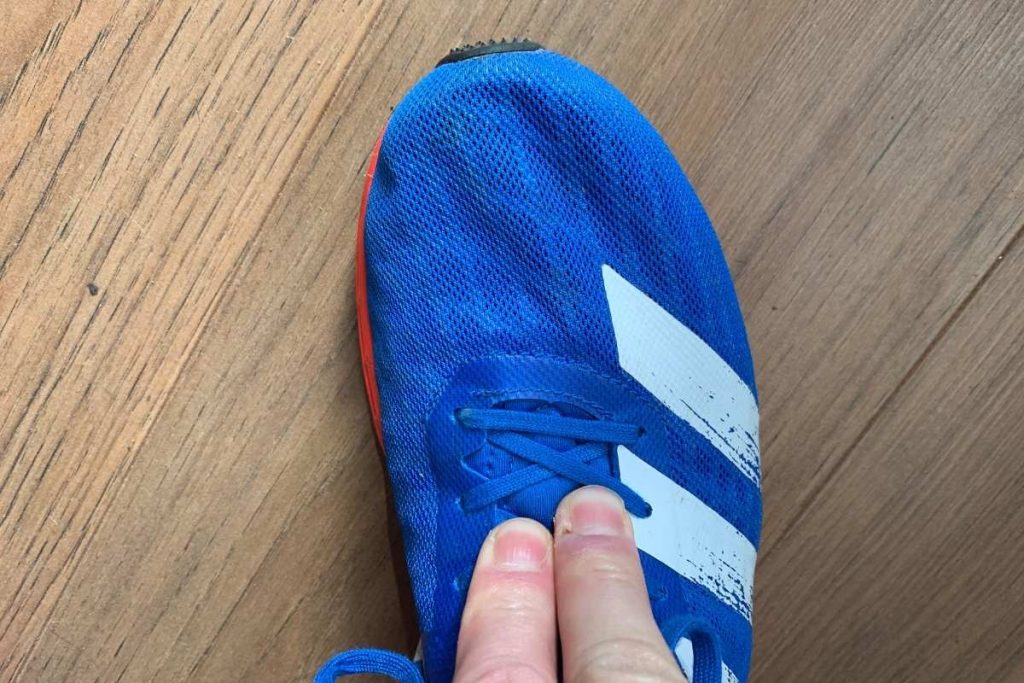
I am a size 11 (UK), all of my running shoes until a couple of years ago were size 11. I suffered repeated blistering and toe holes when training and running long distance events. It was starting to get expensive and in one case I had a toe hole after one pair of running shoes had only completed a half marathon!
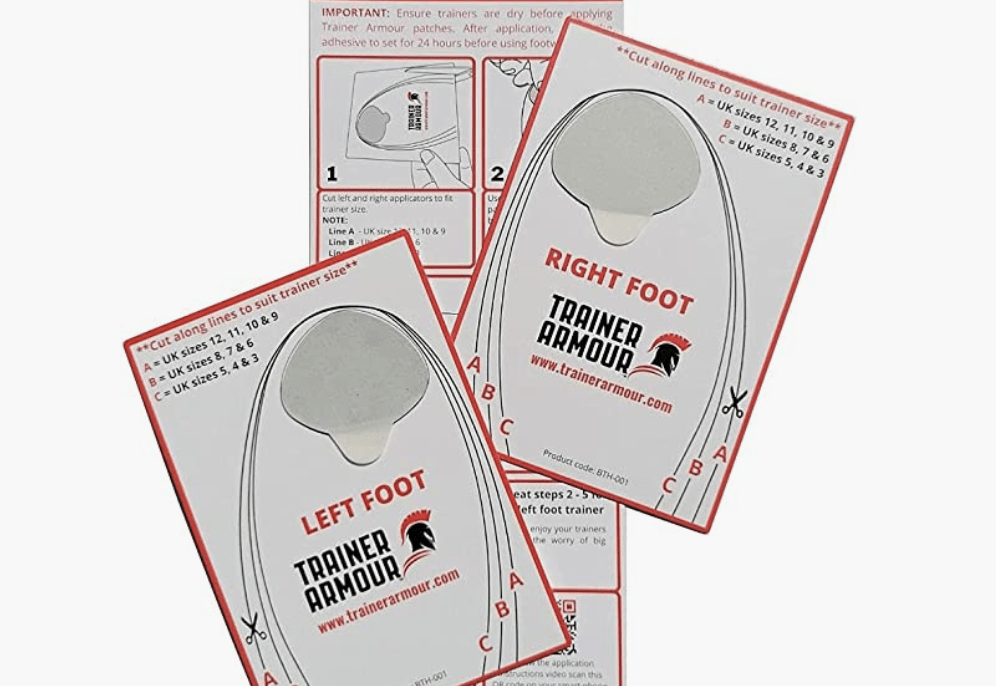
HELPFUL ADVICE!
If you do suffer from holes in the toes of your running shoes, these toe protectors are cheap and will save you a fortune in new running shoes. They are currently only available in the UK on Amazon
A fellow runner then suggested that I consider getting running shoes that were half a size bigger. I now only buy running shoes that are half a size bigger. Not only are they more comfortable, I’ve found they are less likely to rub a hole in the toe box. This means less extra cost for new running shoes, see here for how long running shoes should last.
How much room should be at the end of a running shoe?
As we know, our feet expand during running from heat and so you want to ensure there is some room for this to happen. One good rule of thumb for if a pair of running shoes is the right size is, well literally a rule of thumb.
Measure a thumbs width from the front of your running shoe. With your running shoes fitted press down with your thumb on the toe end of the shoe. Ideally you want to have around a thumbs width of gap to the end of the shoe.
This space will give some flexibility to you as your foot expands and contracts through running.
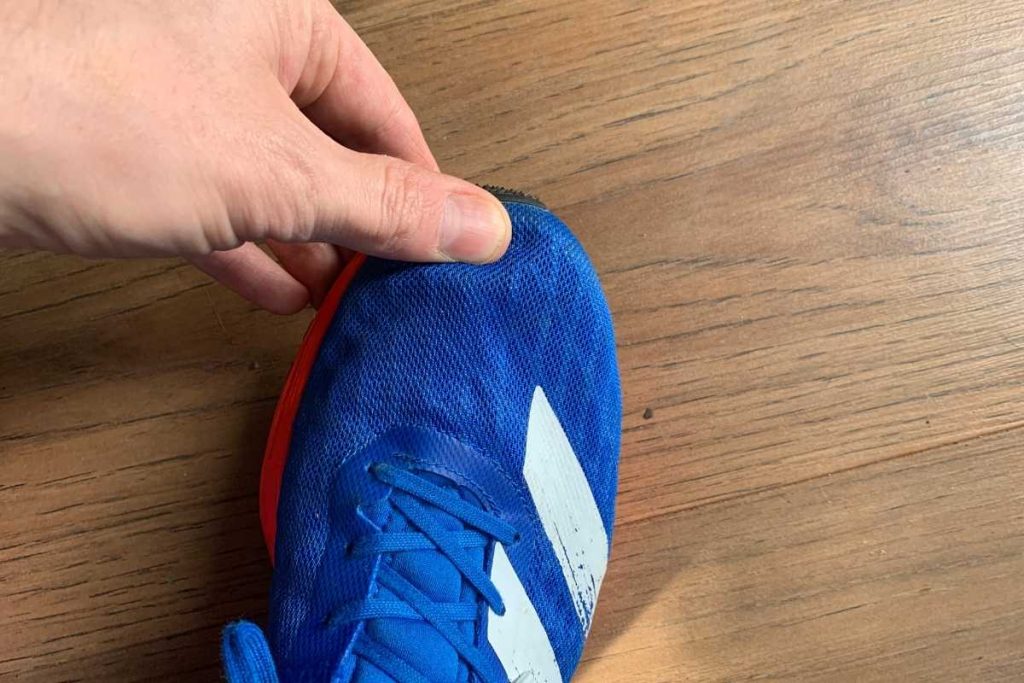
When you try on a pair of running shoes in a shop, press down on the toe end of the shoe. You should be able to feel a thumbs width between the end of the shoe and your toes. Alternatively you can pop out the insole, stand on it (with your heel right to the back) and measure the thumbs width from there:
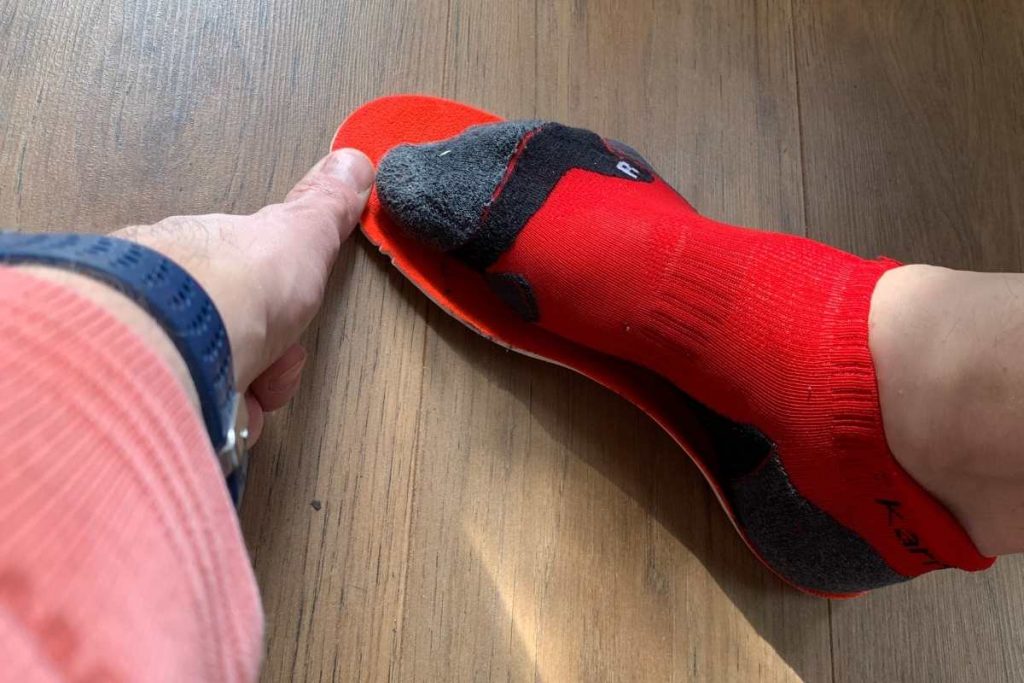
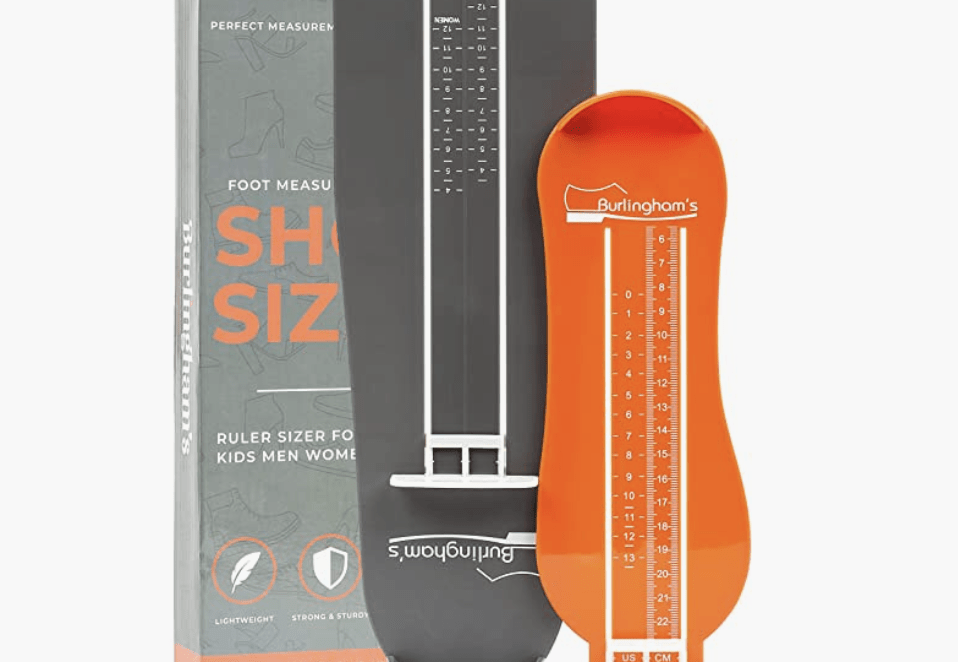
HELPFUL ADVICE
If you regularly order shoes online, consider checking the size of your feet using one of these home devices for foot size. Available on Amazon, very handy!
How do you fix running shoes that are too big?
When running shoes are too big, you will find that your foot slips around inside the shoe or at worst, the shoe will come off while you are running. While we don’t advocate running in trainers that are too big for you, there are some things you can do to help prevent slippage.
To fix running shoes that are too big, you should consider running shoe insoles that are thicker than the originals. You may also want to consider arch inserts or thicker socks. I wrote on compression socks you may also find useful.
If you are only finding small amounts of slippage, it may be worth investing in a set of thicker insoles for your running shoe. It’s been my observation over the years that the insoles that come with more running shoes are thin and compress very quickly after use.
Having suffered with a stress fracture caused by ill-fitting shoes, I was prescribed orthotic insoles which were much thicker and more supportive than the standard insole. I use these orthotic insoles with arch support from Amazon and trim them to fit my shoes. Since then (touch wood…) I haven’t had any problems with pain.
How do you know if your running shoes are too small?
Running shoes that are too small can cause you a wide variety of pain. Because everyone’s feet are unique you may find that particular running shoes are tighter in some areas than others.
Your running shoes are likely too small if any of the following thing apply:
- You don’t have a thumbs width from the front of the shoe to your toes,
- You struggle to lift your toes inside the shoe,
- You feel pressure upwards on the arch of your foot,
- Tightness or rubbing around your heel.
Running in shoes that are too small will cause much discomfort in the long run. This is particularly true if you plan on training and running anything longer than a 10k race. I found from personal experience that it is worth ditching a pair of running shoes that are too small in favour of correctly fitting ones. It’s really NOT worth the pain!
If you’re interested, I explore if running shoes stretch in this blog post.
Conclusion
One of the great things about having so many brands of running shoes and additional inserts or insoles is that we all have individual feet.
From my experience, it took a little trial and error to find a combination that worked for me, that felt comfortable and that helped to prevent injury.
If you are new to running and looking to invest in a decent set of running shoes for the first time, it is worth seeking advice from your local running shop.
It’s important to understand the differences between sneakers and running shoes (link to my article on this).
Ensure you have some wiggle room inside them, but they are not loose enough to move around.
Happy running!

